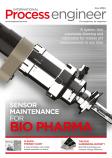Closed loop control: ultrasonic metal welding for busbars
Ultrasonic welding is a popular method for joining busbars in the manufacturing industry. Busbars are used for conducting electricity in electrical equipment, such as switchgear and transformers. Ultrasonic welding is a solid-state joining process that uses high-frequency vibrations to create heat and pressure, which cause friction to bond the metals together. This process is particularly useful for busbars because it produces strong, durable and high-quality welds without requiring additional materials or a lot of time. Ultrasonic welding is also a precise process that allows for accurate control of the welding parameters, such as welding time and pressure, which ensures consistent quality throughout the production process.
The ultrasonic welding process for busbar termination typically involves clamping two or more metal pieces together and applying ultrasonic vibrations to the area where the pieces meet. The vibrations cause the metal to heat up and become soft, which allows the pieces to bond together when pressure is applied. The welding process can be completed in a matter of seconds, making it an efficient and cost-effective method for joining busbars. Additionally, because ultrasonic welding does not require the use of any filler materials, it produces a clean and aesthetically pleasing weld. Ultrasonic welding is an excellent choice for busbar termination because it produces strong, durable, and high-quality welds quickly and efficiently, and with minimal materials and labour costs.
Busbars also play a crucial role in the efficient operation of electric vehicles (EVs). These are conductive strips made of copper or aluminium that are used to distribute electrical power from the battery pack to different components of the EV. They act as an intermediary between the battery and various electrical systems such as the motor controller, charger, and other high-power devices. The busbars must be designed to withstand high currents and temperatures generated during the operation of the EV. The use of busbars helps to reduce energy losses, improve the overall efficiency of the vehicle and enhance the performance of the battery. To weld busbars, a highly sensitive welding process must take place.
Closed-loop control ultrasonic welding is the ideal process for welding busbars. One of the main advantages of this process is that it provides excellent control over the welding parameters, ensuring that the welding process is consistent and that the busbars produced are of the highest quality. This is particularly important for busbars, which are critical components in electrical systems and must meet strict performance and safety standards.
Closed-loop control ultrasonic welding involves utilising electric servo motors and load cells in conjunction with an ultrasonic welder. This innovative technique allows users to closely monitor and adjust the applied force and amplitude during the welding process, resulting in a significant improvement in quality control and highly consistent welding outcomes. Tech-Sonic refers to this process as "multi-step welding," which effectively transforms an open loop system, such as pneumatic welding, into a closed loop system. The use of this technology yields a number of benefits, including greater repeatability of results, superior quality control and significant cost savings.


















